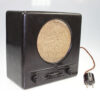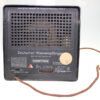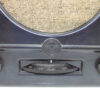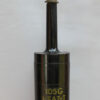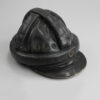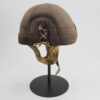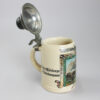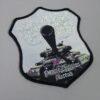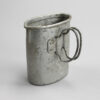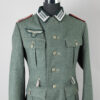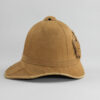Small people’s receiver
Inventory number: DPM 5.14
The German small receiver (DKE) brought radio into German households from the 1930s onwards. With the 1938 series, a radio became affordable for working-class families for the first time. The Reich Ministry of Propaganda commissioned the mass production of the Volksempfänger in order to bring the spoken word of National Socialist ideology into poorer households.
German radio was under the control of the Reich Ministry of Propaganda and broadcast music, political news and speeches by political leaders. The Volksempfänger was also known as the “Goebbels snout” due to the appeals to the population to persevere during the war.
In the program “Wunschkonzert für die Wehrmacht”, which was broadcast from 1939-1941, soldiers could submit music requests and send greetings to their families as well as relatives to their soldiers at the front.
However, listeners were not only able to tune into the prescribed frequencies, but also receive foreign stations such as the BBC and Radio Moscow. Here they received information on the course of the war that was not broadcast by German radio. From 1939, listening to these “enemy stations” was punishable by prison sentences.
Our model of the Austrian company “Hornyphon” is an “economy model”, which was produced from 1939-1945 due to the shortage of raw materials as a result of the war, but differs only in details from its predecessor DKE 1938.
Object of the month
(short) stories from the depot
Unfortunately, many objects cannot currently be shown in the exhibition for conservation reasons. Here you will find unusual objects and exciting stories of special pieces from the depot


